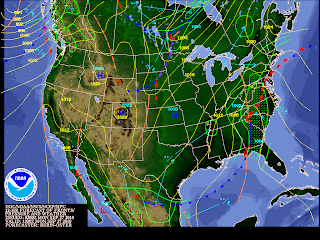Thursday afternoon, severe storms riped through New Jersey and parts of New York with no remorse. Although storms were forested Thursday, the severity took most people off guard. I will admit, after working all morning and day Thursday, I only tuned into the RADAR just before a line of severe storms was knocking at my doorstep. I was actually quite eerie now thinking about it. My precious puppy Jasmine was outside barking non-stop. I looked out my window to see what in the world got her so upset to see the winds picking up and not hearing sound of birds or any other animal. My watch dog was warning me of the approaching storm! The way my dog, or any other animal for that matter, has that sense for bad things to come, especially the weather, it just so incredible! Checking in on the RADAR that moment after, it was like storms were blowing up all over the grid!
Now, I am quite afraid of lightning. Those of you who know me, know this very well. I'm not going to lie, I was pretty scared Thursday. Jasmine and I were huddled up tight on my bed because it was so loud!Continuous lightning all around, I'm pretty sure a house on my street was stuck by lightning, torrential wind swept downpours, and winds gusting upwards of 50mph. It was like mass chaos outside for about 15-20 minutes then all was calm. However, these storms did not completely die after they passed through Trenton, NJ. It just added more fuel as it worked it's way through parts of central Jersey. At approximately 5:15 P.M. Thursday a tornado warning was posted for a large swath of an area for portions of Middlesex and Ocean Counties (from as South of Jackson Twp all the way to the coast and North). The National Weather Service reported winds associated with a wet microburst that moved through the Southeastern corner of Perth Amboy in Middlesex County. This microburst produced a max. wind gust of appromimately 80 mph. Also within this line of storms, the Terminal DOPPLER RADAR associated with EWR airport indicated at that time, a rotating wall cloud and funnel cloud! However, the funnel cloud dissipated before the cloud reached the ground.

This image depicts what happens during a microburst. This definition from the NWS was the best well stated: 'a Microburst is a convective downdraft with an affected outflow area of less than 2 1/2 miles wide and peak wind gusts lasting less than 5 minutes. Microbursts may induce dangerous horizontal and vertical wind shears. Straight-line winds are generally any wind that is not associated with rotation'...the main difference from tornadic winds.
Many people are under the assumption that tornadoes can not happen in this tri-state area and that it is only a Midwestern weather phenomena. Let me tell you, TORNADOES CAN OCCUR ANYWHERE, as long as the proper dynamics are in place. Not only was there a NWS reported Microburst in NJ Thursday, but at appromimately 6:05 P.M. an EF1 Tornado touched down 2 miles Southwest of Wodruff in Ocean County, NJ. Thankfully there were no reported injuries, however there was quite a lot of damage with in the 2 mile path from this tornado that has maximum winds of 90 mph!
How can a tornado form? Well, there are three 'key' ingredients for creating this most violent kind of storm.
1.) moisture in the lower levels of the atmosphere
2.) unstable air
3.) lifting force (or heating air from the ground)
On Thursday, a warm front pushed through not only making temperatures warmer (#3) but adding more moisture to the air (#1); it did feel a bit more humid as the day progressed...Then, towards the late afternoon a trailing cold front worked its way in creating more unstable air (#2), a lot more moisture, and significantly cooler temperatures prevailing. Now, on a hot and humid day, which was a moderate the case Thursday, the moist air will rise until it reaches dry and cool air, condense and forms a cloud. The 'unstable' air so-to-speak feeds (the cloud grows higher in the atmos.) the cloud and creates a thunderstorm. The most severe of storms form when low level, moist, warm air from the South meets cooler air blowing in from the North or West (the cold front was moving in from the Southwest, while the center of the low was to our North filtering in cooler air from the Northwest). More energy can be added to a storm when drier winds are blowing from the southwest and can add to the velocity of the air that is rising (aka the updraft).

Tornadoes form on the inside edge between the updraft and the descending air which causes rotation. Since a tornado is a updraft, air is sucked up into the already rising air which is what creates the damaging tornado vortex. It is just simply the rising and sinking of air plus shear and an energy source that can create such dangerous storms.
Remember, when the skies turn dark, and you hear the slightest rumble of thunder, seek shelter immediately. Never try to out run Mother Nature, you will never win.




















